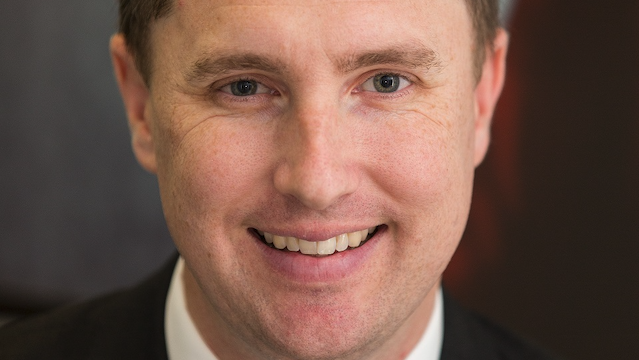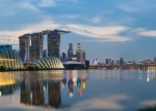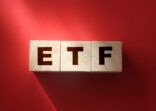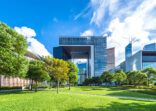Globally, ESG (environment, social, governance) ETFs have gained traction, with assets growing to nearly $22.47bn in 2018 from just around $10bn in 2016, according to data from ETFGI. The number of ESG ETFs has also more than doubled to nearly 250 during the same period.

In Hong Kong, ETF investors, including institutions and distributors, have also indicated that they plan to invest in ESG ETFs, according to a survey conducted by Brown Brothers Harriman (BBH).

However, not one asset manager operating in the SAR has listed an ESG-focused ETF on the local bourse.
One of the challenges of launching an ESG ETF is determining how the product should be structured, according to Chris Pigott, head of Hong Kong ETF services at BBH.
“Some of the challenges that exist when you try to put together an ESG ETF obviously lie in the fact that ESG is a very broad concept without a single definition globally,” Pigott told FSA.
He explained that while investors may indicate their interest in such products, some of them may have different preferences on which factor the product should tilt to.
“You certainly have some investors who want the products to tilt more to the ‘E’ factor or more to the ‘S’, and then some would look at it holistically in which it should cover the broader themes of ESG.”
It is easier to launch an actively managed ESG product, as managers can first roll them out in the form of segregated mandates, which are usually customised for specific institutional clients, he added.
However, Pigott believes that Hong Kong will see its first ESG ETF soon.
“It is only a matter of time before we start to see some of these products to be deployed here in Hong Kong.”
“In Taiwan, for example, they just saw the launch of its first ESG ETF this year,” he said. That product is Yuanta Securities’ FTSE4Good TIP Taiwan ESG ETF, which was launched last month.
L&I products
Another product category within the ETF space that has been in demand among Hong Kong investors is leveraged and inverse (L&I) products, according to Pigott.
L&I products had the second highest net inflows this year ending August, which totalled HK$1.3bn ($166bn), according to data from Morningstar Direct. However, the bulk of that came from one product – the CSOP Hang Seng Index Daily (-2x) Inverse Product, which had HK$1.52bn in net inflows.
Top 10 ETF categories by net inflows
| ETF category |
Net inflows (HK$m) |
Number of products in the category |
| Money Market – Other |
3,118.96 |
3 |
| Trading – Leveraged/Inverse Equity |
1,351.29 |
22 |
| USD Government Bond |
841.83 |
1 |
| Asia Bond |
407.84 |
1 |
| US Large-Cap Blend Equity |
250.49 |
2 |
| Taiwan Large-Cap Equity |
183.92 |
1 |
| Vietnam Equity |
179.63 |
1 |
| Commodities – Precious Metals |
142.36 |
2 |
| ASEAN Equity |
68.40 |
1 |
| Greater China Equity |
60.01 |
1 |
Source: Morningstar Direct
CSOP’s product was just launched in May, following SFC’s relaxation of its rules on inverse products in March. Previously, inverse products were subject to a maximum leverage factor of one time (-1x). Under the new rules, the leverage factor cap for inverse products was raised to two-times (2x).
Since the regulation change, CSOP now manages three -2x inverse products. The Hang Seng China Enterprises Index Daily (-2x) product, which was restructured in June from just having a -1x multiplier, had year-to-date net inflows of HK$41m, according to Morningstar. CSOP today also launched another -2x inverse product, which is linked to the Nasdaq 100 Index.
In total, four -2x inverse products have been launched, the other being China Asset Management’s Direxion Nasdaq-100 Daily (-2x) Inverse Product.
“Investors are leveraging these inverse products for hedging purposes and more tactical allocations in terms of how they are deploying them as part of their overall allocation strategy,” Pigott said.
“Obviously, in Hong Kong, there is a well-established market that can offer different types of leverage. But the strategic advantage of being able to access these products in the form of an ETF is the ease of access for investors, in comparison to using other derivatives such as futures or other instruments,” he said.
China themes
Another category that Pigott believes is gaining traction is China-focused thematic products.
In total, there are around 24 China A-share-focused ETFs listed in Hong Kong with HK$62bn in assets, accounting for around 20% of the SAR’s ETF market.
Industry players have often said that Hong Kong’s ETF market lacked diversity, especially in the Greater China equity space. However, asset managers have started to offer more specialised passive products to investors, providing alternatives to the glut of China equity index ETFs.
The most recent player to provide a China alternative is Mirae Asset Global Investments, which launched the Horizons China Biotech ETF and the China Cloud Computing ETF in July. Since their launch, the Biotech ETF has already gathered HK$878.5m in assets, while the Cloud Computing product now has HK$360m, according to data from Hong Kong Exchange.
Other China thematic ETFs have also grown in size, such as the ICBC CSOP S&P New China Sectors ETF, which has gathered nearly HK$900m in assets after its launch in 2016.
“When you look at investors who have been accessing China for an extended period of time, they are now looking to expand their exposure past the core market cap exposure, such as the A50 or CSI 300 indices,” Pigott said.
“Those investors are now looking at different mid-cap exposures, sectors or themes such as technology or healthcare. These sector-specific products may have low correlations to the broader market, which provides diversification opportunities for investors.”
Separately, Pigott added that asset managers should consider launching other products that have not yet proliferated in the market, such Asia-focused equity ETFs and active ETFs. So far, there are only around five Asia equity ETFs and one active ETF, which is a money-market product launched in June.

















